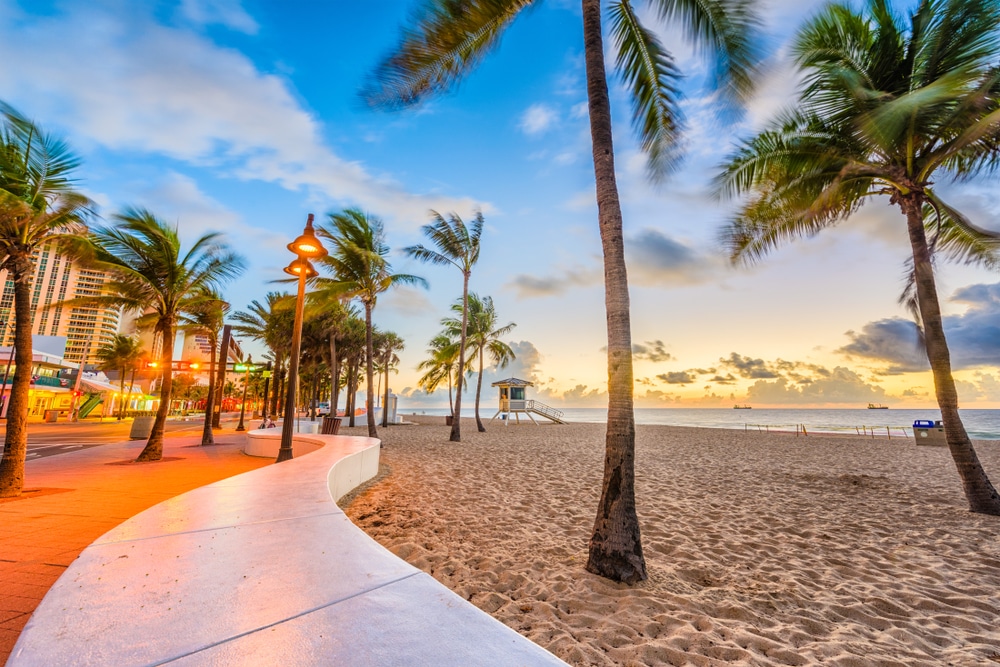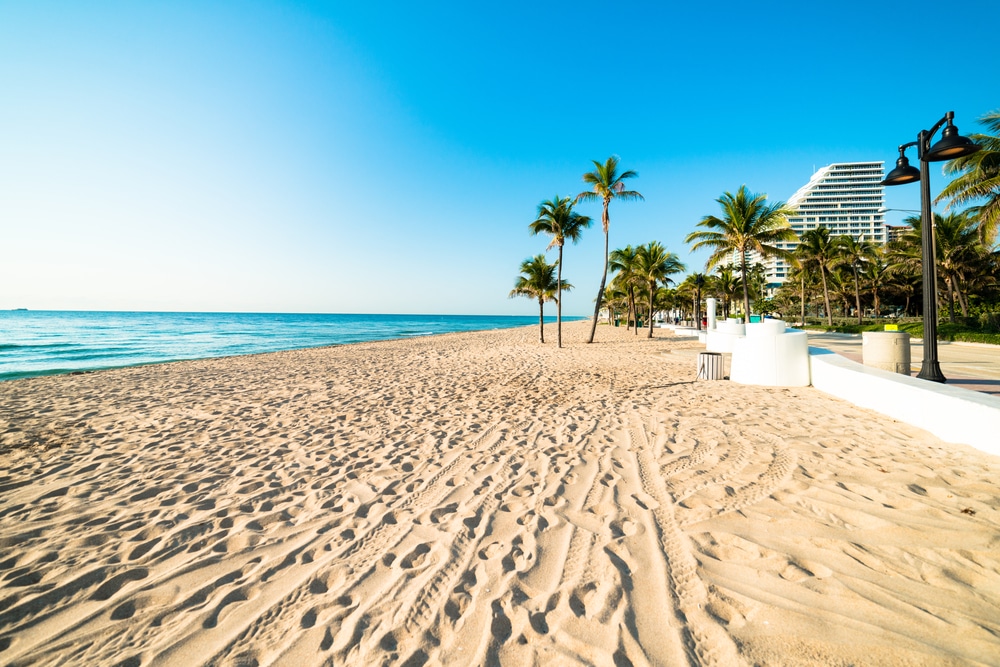Fort Lauderdale Beach stands as a beacon of relaxation and vibrant social life in South Florida. This guide will delve into what makes Fort Lauderdale Beach a must-visit destination, covering its history, interesting facts, and essential visitor information.
Introduction
Fort Lauderdale Beach is renowned for its expansive, picturesque sandy shores stretching alongside the Atlantic Ocean. It’s a centerpiece of the city’s tourist attractions, drawing millions of visitors annually who seek its warm waters, enjoyable climate, and the lively atmosphere that surrounds it. This beach isn’t just a place to soak up the sun; it offers a rich tapestry of activities, dining, and cultural experiences.
History
The history of Fort Lauderdale Beach is deeply intertwined with that of the city itself. Originally inhabited by the Tequesta Indians and later by Seminole tribes, the area saw significant changes with the arrival of European settlers. In the 20th century, Fort Lauderdale transformed from a largely agricultural community into a bustling city, thanks in part to the Florida land boom of the 1920s.
The development of Fort Lauderdale Beach as a tourist destination began earnestly in the post-WWII era when it became known as a spring break hotspot, thanks to the 1960 film “Where the Boys Are.” The city has since evolved to cater to a more diverse and upscale crowd, focusing on family-friendly amenities, luxury accommodations, and refined cultural attractions.
Facts
- Length: The beach stretches approximately 7 miles along the Atlantic coast.
- Sand Quality: Known for its clean, fine sand.
- Accessibility: Offers numerous accessibility options including beach wheelchairs.
- Awards and Recognition: Consistently rated as one of the top beaches in the U.S. for cleanliness and amenities.
Location
Fort Lauderdale Beach is centrally located in Fort Lauderdale, easily accessible from most parts of the city. It runs along A1A, a scenic route that offers breathtaking ocean views.
- Address: Fort Lauderdale Beach, A1A, Fort Lauderdale, FL, USA
Website
For more detailed information about events, amenities, and any updates on Fort Lauderdale Beach, visit the official Fort Lauderdale tourism website: Sunny.org.
Opening Hours
Fort Lauderdale Beach is open to the public 24 hours a day, though specific hours for lifeguard services and other facilities may vary, typically from sunrise to sunset.
Things to Do
Fort Lauderdale Beach offers an array of activities to suit any preference:
- Sunbathing and Swimming: The clear blue waters and well-maintained sands are perfect for a classic beach day.
- Water Sports: From jet skiing to snorkeling, the beach provides numerous options for water-based adventures.
- Beach Volleyball: There are several courts available for public use.
- Strolling and Jogging: The palm-lined beachfront promenade is ideal for a leisurely stroll or an energizing jog.
- Dining and Shopping: The nearby Las Olas Boulevard offers a variety of shops, restaurants, and bars.
- Cultural Events: Check local listings for beachside concerts, festivals, and art shows.
Tips for Visiting
- Sun Protection: The Florida sun can be intense. Always wear sunscreen, a hat, and sunglasses.
- Stay Hydrated: Bring plenty of water to keep hydrated throughout the day.
- Observe Safety Signs: Pay attention to flags and signs indicating swimming conditions.
- Parking: Arrive early to secure parking. Consider using public transportation or rideshare options during peak times.
- Respect Wildlife: Don’t disturb nesting sea turtles or other local wildlife.
Conclusion
Fort Lauderdale Beach is more than just a stretch of sand; it’s a vibrant community and a top-tier tourist destination. Whether you’re seeking a peaceful day by the sea or an active holiday filled with sports and cultural experiences, Fort Lauderdale Beach offers a dynamic environment that caters to all. Its rich history, combined with modern amenities and a focus on sustainability, ensures that it will remain a beloved destination for years to come.








